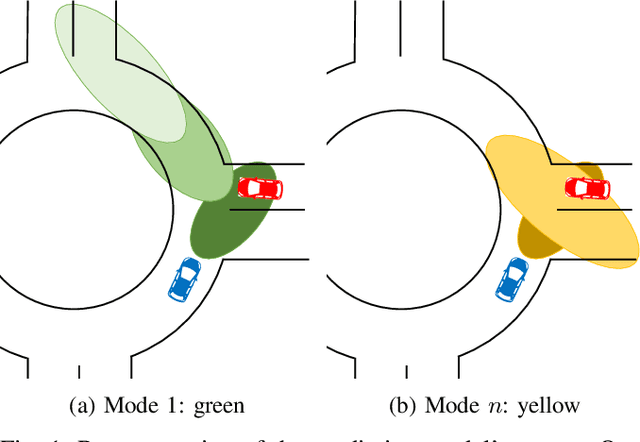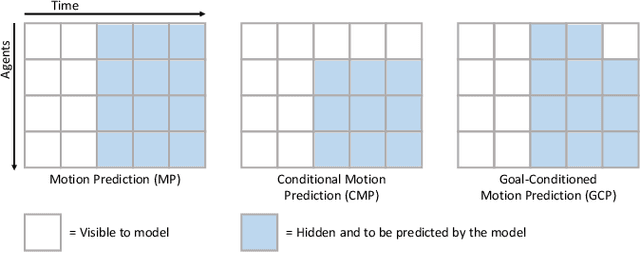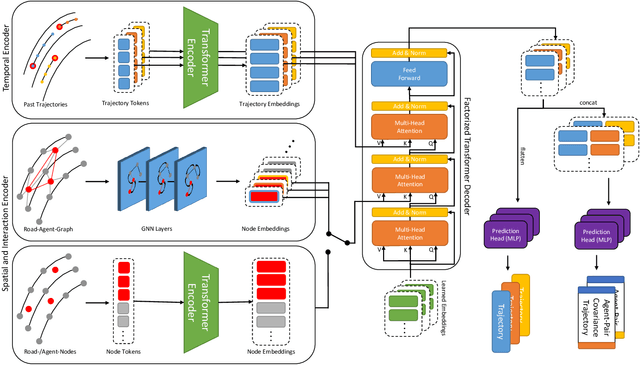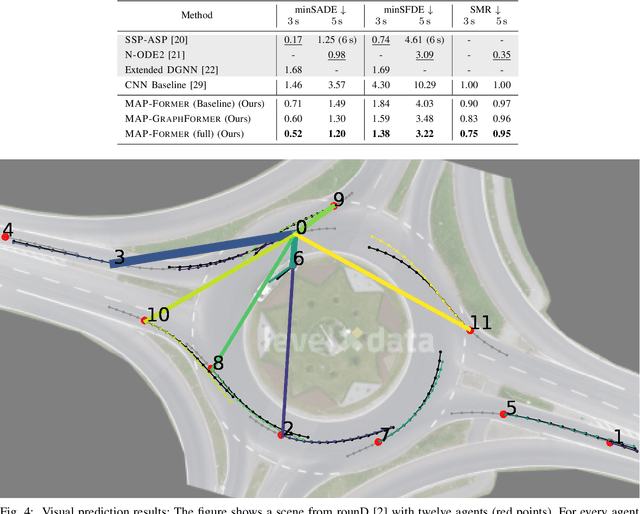Marlon Steiner
SceneMotion: From Agent-Centric Embeddings to Scene-Wide Forecasts
Aug 02, 2024



Abstract:Self-driving vehicles rely on multimodal motion forecasts to effectively interact with their environment and plan safe maneuvers. We introduce SceneMotion, an attention-based model for forecasting scene-wide motion modes of multiple traffic agents. Our model transforms local agent-centric embeddings into scene-wide forecasts using a novel latent context module. This module learns a scene-wide latent space from multiple agent-centric embeddings, enabling joint forecasting and interaction modeling. The competitive performance in the Waymo Open Interaction Prediction Challenge demonstrates the effectiveness of our approach. Moreover, we cluster future waypoints in time and space to quantify the interaction between agents. We merge all modes and analyze each mode independently to determine which clusters are resolved through interaction or result in conflict. Our implementation is available at: https://github.com/kit-mrt/future-motion
MAP-Former: Multi-Agent-Pair Gaussian Joint Prediction
Apr 30, 2024



Abstract:There is a gap in risk assessment of trajectories between the trajectory information coming from a traffic motion prediction module and what is actually needed. Closing this gap necessitates advancements in prediction beyond current practices. Existing prediction models yield joint predictions of agents' future trajectories with uncertainty weights or marginal Gaussian probability density functions (PDFs) for single agents. Although, these methods achieve high accurate trajectory predictions, they only provide little or no information about the dependencies of interacting agents. Since traffic is a process of highly interdependent agents, whose actions directly influence their mutual behavior, the existing methods are not sufficient to reliably assess the risk of future trajectories. This paper addresses that gap by introducing a novel approach to motion prediction, focusing on predicting agent-pair covariance matrices in a ``scene-centric'' manner, which can then be used to model Gaussian joint PDFs for all agent-pairs in a scene. We propose a model capable of predicting those agent-pair covariance matrices, leveraging an enhanced awareness of interactions. Utilizing the prediction results of our model, this work forms the foundation for comprehensive risk assessment with statistically based methods for analyzing agents' relations by their joint PDFs.
 Add to Chrome
Add to Chrome Add to Firefox
Add to Firefox Add to Edge
Add to Edge